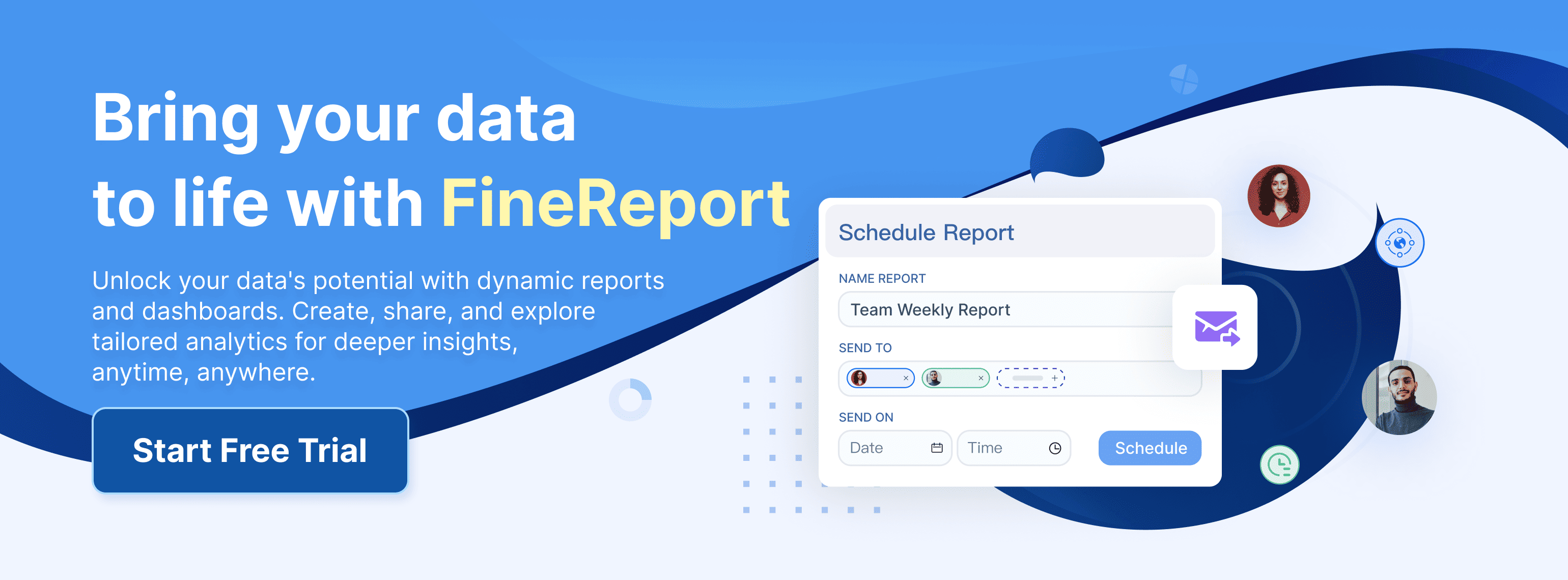Enterprise reporting involves gathering, analyzing, and presenting business data to help you make informed decisions. It transforms raw data into actionable insights, enabling you to understand trends, measure performance, and identify opportunities. In 2025, its importance continues to grow as businesses rely more on data-driven strategies to stay competitive. With markets evolving rapidly, you need tools that provide accurate and timely information. Enterprise reporting empowers you to adapt quickly, innovate effectively, and maintain a strong position in your industry.
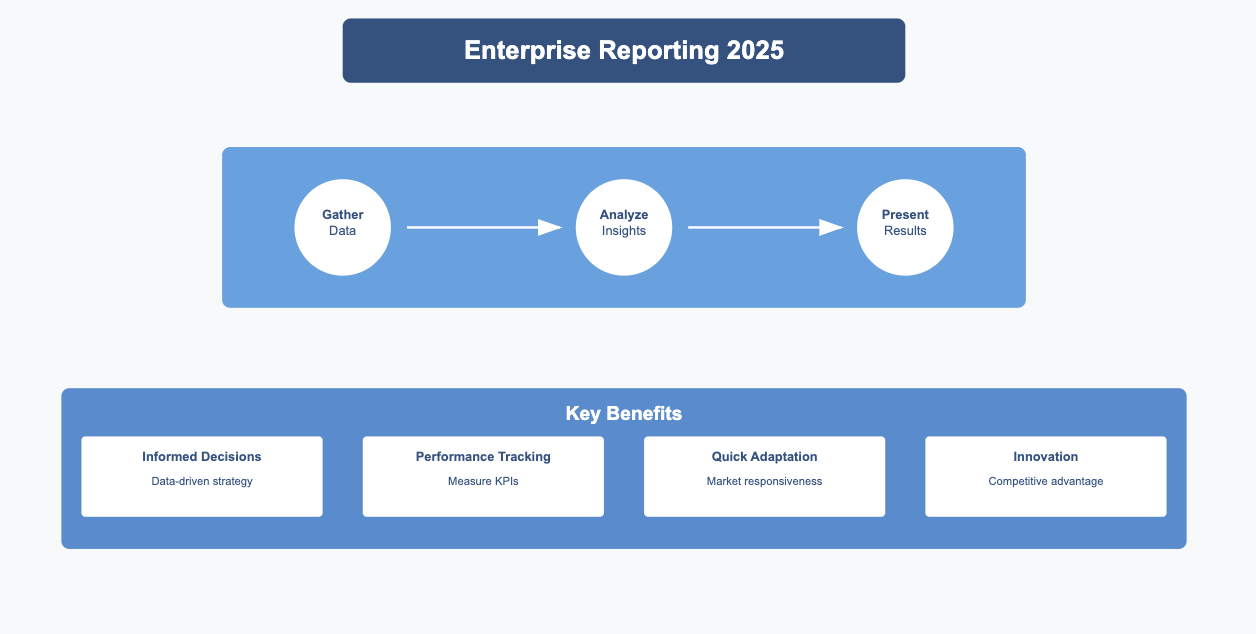
Understanding Enterprise Reporting
Definition and Purpose
Enterprise reporting is the process of transforming raw data into meaningful insights that guide your business decisions. Enterprise reporting has evolved significantly since the 1980s, when businesses relied on manual spreadsheets and static reports. The rise of ERP systems in the 1990s enabled centralized data collection, and today, AI-driven platforms like FineReport automate 80% of reporting tasks, according to a 2024 IDC study. This evolution underscores how modern tools empower real-time, cross-departmental insights.
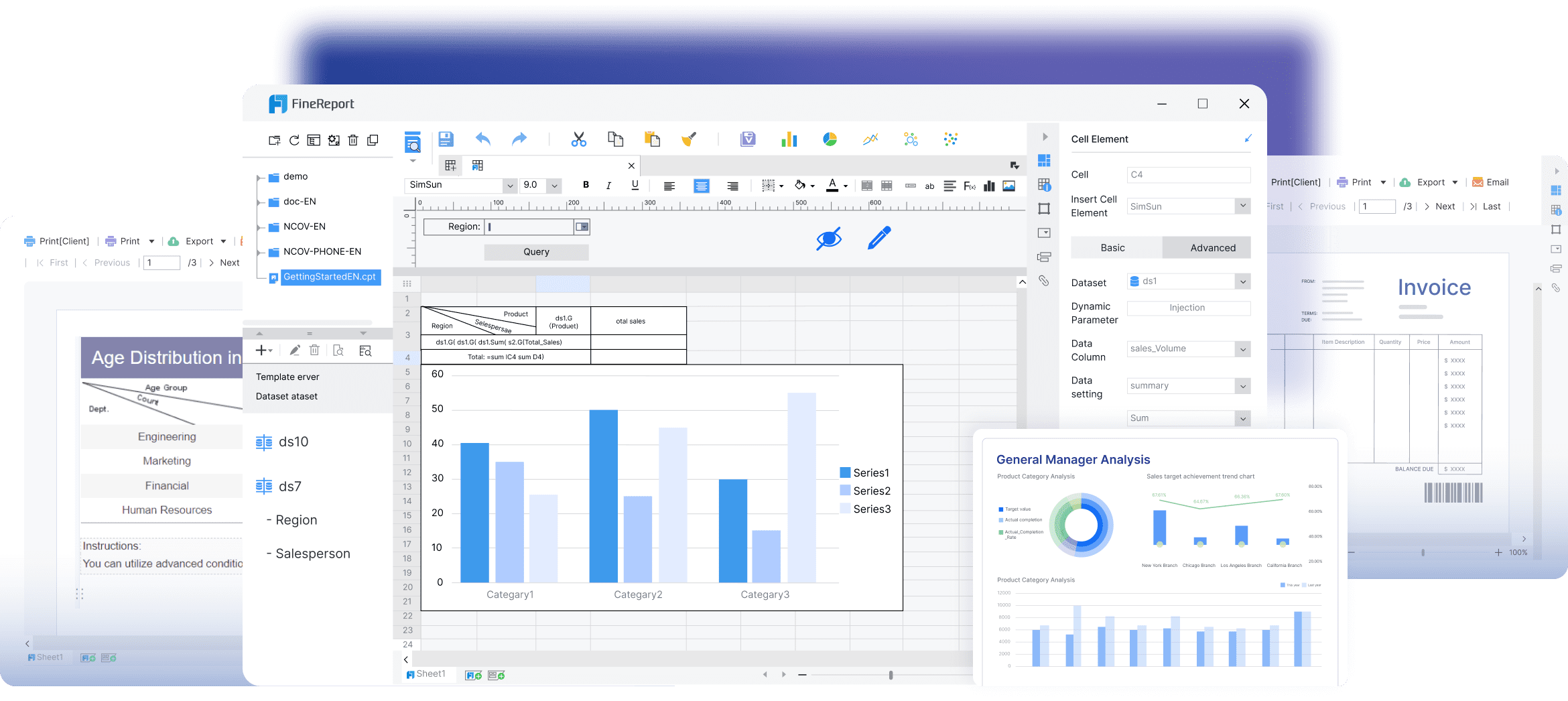
The primary objectives of enterprise reporting include:
- Financial Performance Analysis: Gain insights into revenue, profitability, and cost metrics to optimize financial outcomes.
- Operational Efficiency Monitoring: Track key metrics to improve productivity and streamline processes.
- Customer Satisfaction and Retention: Measure satisfaction levels to enhance customer experience and loyalty.
- Risk and Compliance Monitoring: Ensure adherence to regulations and mitigate risks in regulated industries.
- Employee Performance and Engagement: Assess workforce effectiveness and identify areas for development.
- Market and Competitive Analysis: Analyze trends and competitive intelligence to inform strategic decisions.
By addressing these objectives, enterprise reporting becomes a cornerstone of your business strategy.
How Enterprise Reporting Powers Enterprise Business Intelligence
Enterprise reporting plays a vital role in enterprise business intelligence by providing a comprehensive view of your organization’s performance. It delivers curated information to decision-makers, enabling them to act on insights effectively. Key contributions include:
- Offering metrics and dashboards that summarize business performance.
- Aligning reporting objectives with your overall business strategy to achieve goals.
- Generating intuitive visualizations that help you identify trends and patterns.
- Supporting data-driven decision-making to improve operational efficiency.
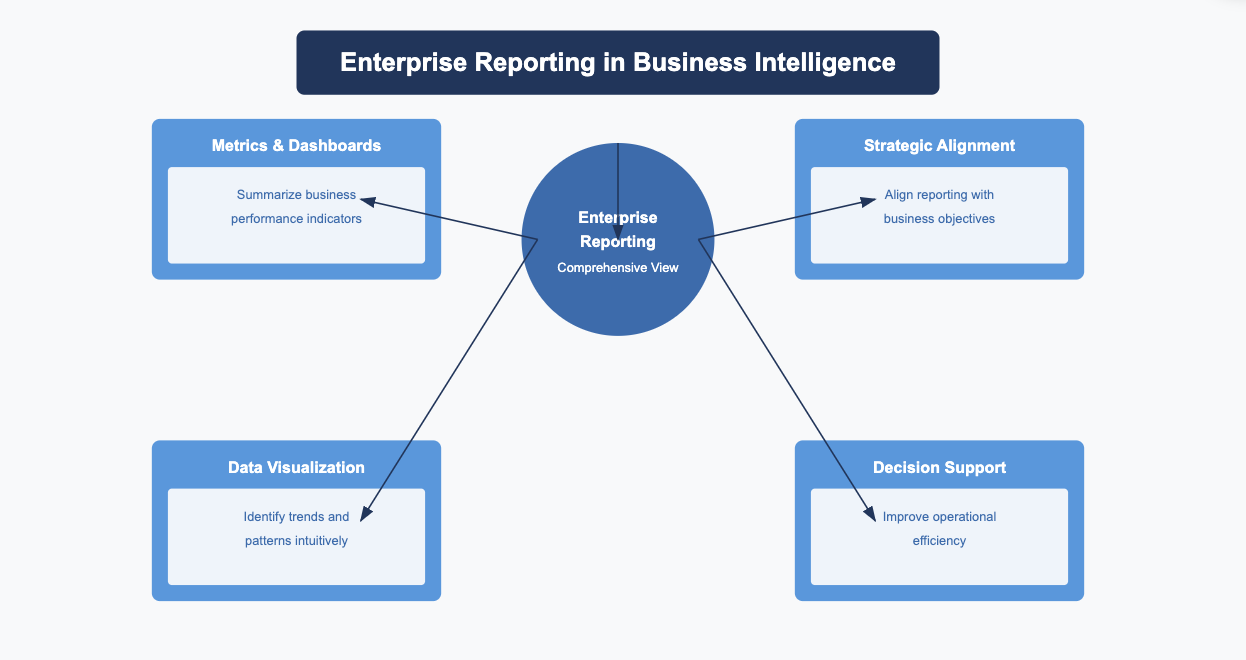
Enterprise reporting integrates seamlessly with business intelligence tools, ensuring you have access to actionable insights for day-to-day activities and long-term planning.
Key Features of Enterprise Reporting Software
Modern enterprise reporting software comes equipped with features designed to simplify data analysis and enhance usability. These include:
- Intuitive Tools: Drag-and-drop interfaces and visual report-building tools make report creation easy.
- Customization: Build tailored reports without extensive programming knowledge.
- Advanced Dashboards: Real-time data visualization and customizable designs provide clarity.
- Security Features: Row-level security and single sign-on ensure controlled data access.
- Interactive Elements: Drill-downs, filters, and dynamic text boxes allow deeper exploration of data.
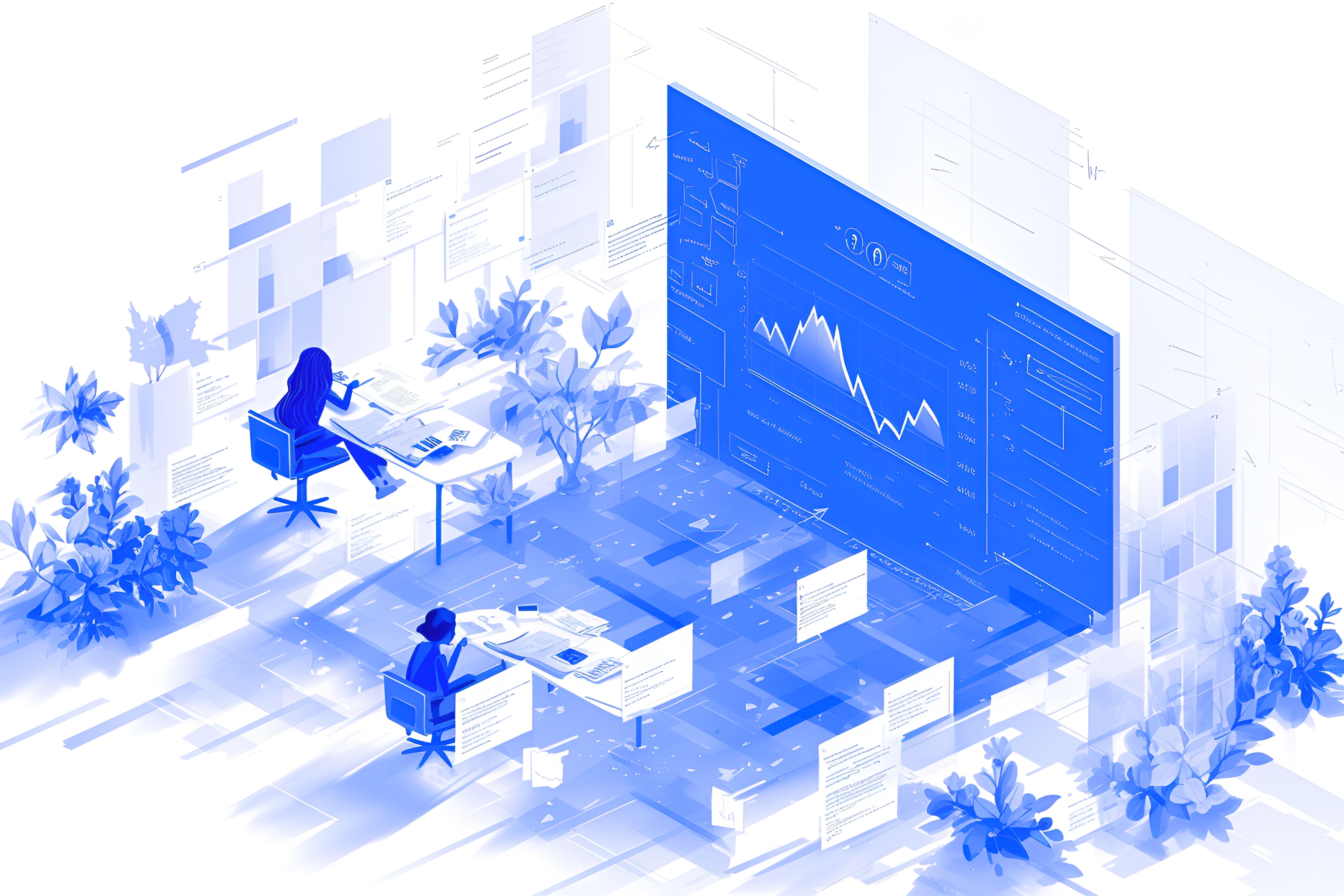
These features empower you to create insightful reports, collaborate effectively, and respond quickly to changes in your business environment.
The Importance of Enterprise Reporting in Business Decision-Making
Enabling Data-Driven Decisions
Enterprise reporting helps you make data-driven decisions by turning raw data into actionable insight. It provides a clear view of your business performance, allowing you to identify trends, measure outcomes, and predict future scenarios. With access to real-time insights, you can respond quickly to market changes or operational challenges. For example, tracking metrics like revenue growth rate or customer lifetime value helps you evaluate your strategies and adjust them to achieve better results. By relying on accurate data, you reduce guesswork and improve the quality of your decision-making.

Enhancing Business Success and Competitiveness
Enterprise reporting strengthens your ability to compete in the market. It equips you with insights that highlight areas for improvement and opportunities for growth. Companies like Lotte.com and Cementos Argos have demonstrated how enterprise reporting can transform challenges into success.
| Company | Challenge | Solution | Results |
|---|---|---|---|
| Lotte.com | Understanding shopping cart abandonment | Implemented customer experience analytics to analyze behavior | Increased customer loyalty and $10 million in sales after addressing checkout issues. |
| Cementos Argos | Seeking competitive advantage and better decisions | Created a business analytics center and invested in data science teams | Standardized finance processes and improved profitability through better customer insights. |
These examples show how enterprise reporting can help you enhance customer satisfaction, streamline operations, and boost profitability. By leveraging insights effectively, you can stay ahead of competitors and achieve long-term success.
Supporting Strategic Planning and Innovation
Enterprise reporting plays a critical role in shaping your strategic planning and fostering innovation. It provides insight into key performance indicators that guide your long-term goals. Metrics such as IT system availability and employee satisfaction index offer valuable information about your organization’s infrastructure and work environment. These insights help you identify areas for improvement and prioritize investments.
- Revenue growth rate shows how well your strategies drive income over time.
- Customer lifetime value helps you understand customer loyalty and profitability.
- IT system availability ensures your technology supports business operations effectively.
- Employee satisfaction index highlights workplace strengths and areas needing attention.
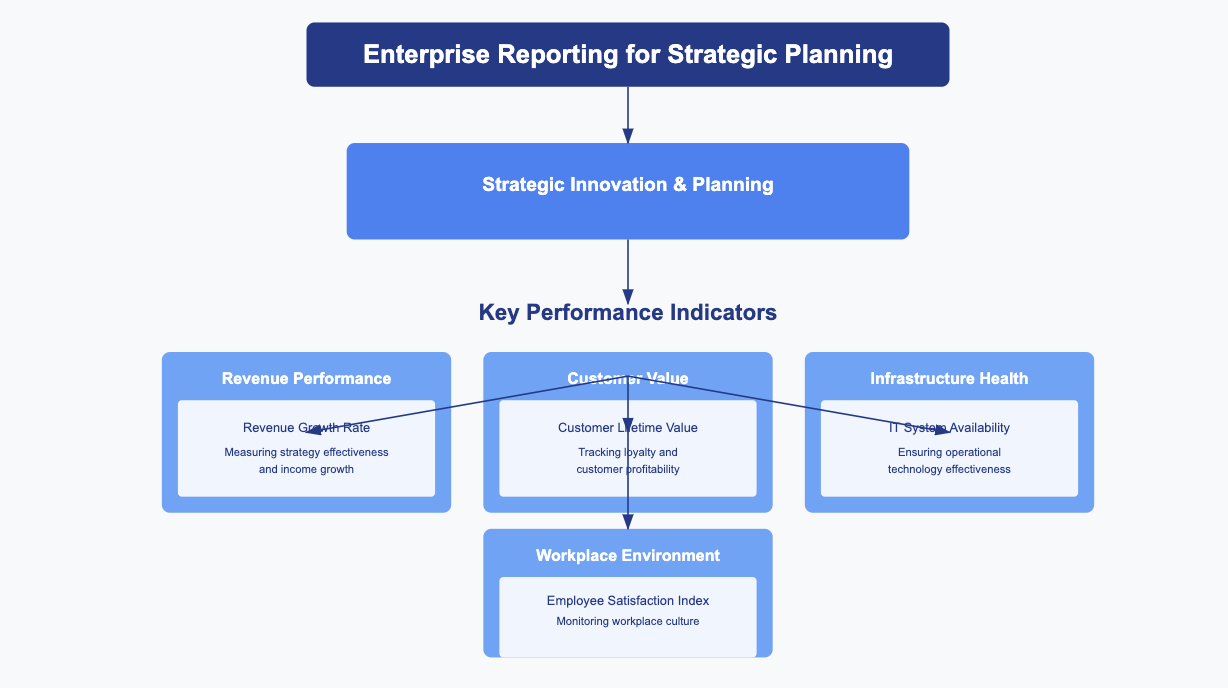
By analyzing these metrics, you can align your strategies with market demands and innovate to meet evolving customer needs. Enterprise reporting ensures you have the insight needed to plan effectively and stay adaptable in a competitive landscape.
Key Benefits of Enterprise Reporting
Improved Decision-Making
Enterprise reporting equips you with the tools to make better decisions. Gartner’s 2025 report notes that "organizations using integrated BI and reporting tools achieve 30% higher decision accuracy." Platforms like FineBI exemplify this by combining self-service analytics with enterprise-grade security, enabling finance teams to reduce budgeting errors by 25% (Forrester, 2025).

It transforms raw data into actionable insights, helping you identify trends, measure performance, and predict outcomes. With access to real-time data, you can evaluate your strategies and adjust them to meet your goals. For example, tracking metrics like customer retention rates or operational costs allows you to pinpoint areas that need improvement. This clarity reduces guesswork and ensures your decisions are based on facts rather than assumptions. When you rely on accurate and timely information, you can confidently steer your business toward success.
Enhanced Productivity and Efficiency
Enterprise reporting enhances productivity by streamlining how you access and analyze data. It provides real-time information, enabling you to make informed decisions quickly. This capability simplifies financial reporting, compliance processes, and operational workflows. For instance, when your teams have accurate data at their fingertips, they can focus on high-value tasks instead of wasting time searching for information. This efficiency boosts overall productivity and ensures your organization operates smoothly. By fostering a culture of data-driven decision-making, enterprise reporting helps you achieve more with fewer resources.

Better Collaboration Across Teams
Enterprise reporting fosters collaboration by creating a shared platform for data access and analysis. When your teams work with the same set of insights, they can align their efforts and achieve common goals. This approach breaks down silos that often hinder communication and teamwork. Silos create isolated systems, reducing efficiency and trust within your organization. By promoting transparency and a data-driven culture, enterprise reporting encourages cross-functional collaboration. Teams can share insights, solve problems together, and build stronger relationships. This improved collaboration leads to better outcomes and a more cohesive work environment.
Real-Time Insights for Faster Responses
Real-time insights give you the ability to act quickly and confidently in a fast-paced business environment. Enterprise reporting solutions provide instant access to accurate information, allowing you to respond promptly to market changes or operational challenges. By consolidating data from multiple sources, these tools offer a comprehensive view of your business performance. This clarity helps you allocate resources effectively and optimize processes.
When you have real-time data at your fingertips, you gain several advantages:
- Agility and competitive advantage: You can react swiftly to market trends, customer behavior, or unexpected disruptions. This agility keeps you ahead of competitors.
- Enhanced customer experience: Real-time insights help you understand customer needs and preferences. You can personalize offerings and improve satisfaction.
- Operational efficiency: Identifying bottlenecks and inefficiencies becomes easier. You can streamline workflows and improve productivity.
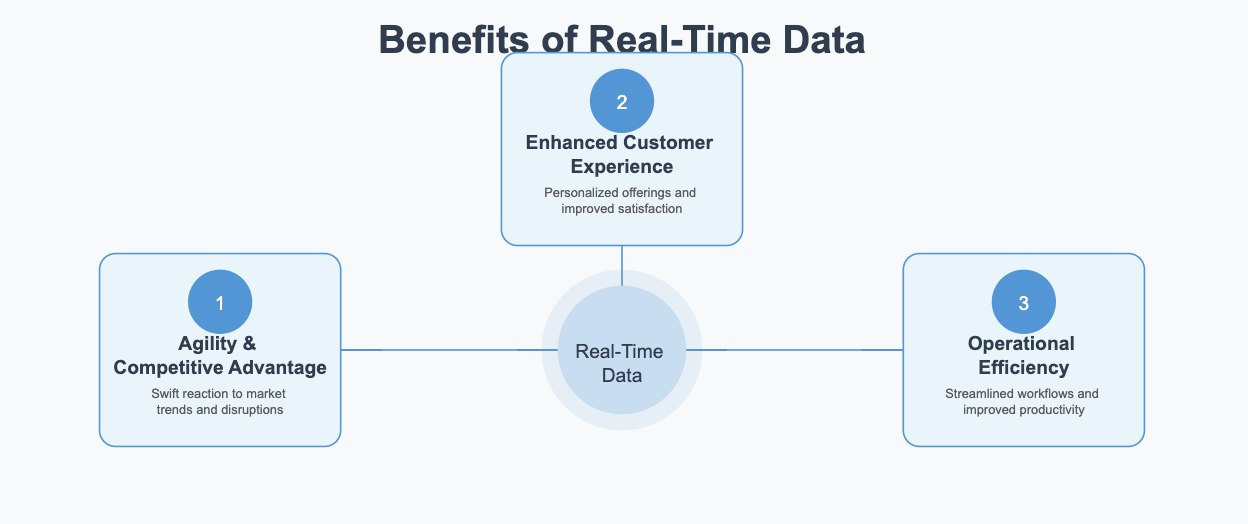
For example, imagine tracking inventory levels in real time. You can prevent stockouts or overstocking by adjusting orders immediately. Similarly, monitoring website traffic in real time allows you to identify and resolve issues that might affect user experience. These quick responses ensure your operations run smoothly and your customers remain satisfied.
Tip: Use dashboards with real-time visualizations to monitor key metrics. This approach makes it easier to spot trends and take action without delay.
Real-time insights empower you to make informed decisions faster. They reduce the risk of delays caused by outdated information. With this capability, you can adapt to changes, seize opportunities, and maintain a competitive edge in your industry.
Essential Capabilities of Enterprise Reporting Software
Interactive and Customizable Reporting
Interactive and customizable reporting allows you to tailor insights to your specific needs. Modern enterprise reporting software includes intuitive drag-and-drop tools that simplify report creation. You can build reports without requiring programming expertise, making the process accessible to everyone. Customizable templates let you design reports that align with your business goals. Advanced dashboards provide real-time data visualization, ensuring your insights are always up-to-date.

Interactive features like drill-down functionality and filtering options enable you to explore data in greater detail. For example, you can analyze sales performance by region or product category with just a few clicks. Automated report scheduling reduces manual effort, ensuring reports are delivered on time. Mobile accessibility enhances flexibility, allowing you to access reports from anywhere. These capabilities make enterprise reporting software a vital component of business intelligence platforms, empowering you to make informed decisions quickly.
Self-Service Features for Non-Technical Users
Self-service features in enterprise reporting software empower non-technical users to access and analyze data independently. A multinational retailer using FineDataLink reduced IT dependency by 40%, allowing marketing teams to generate real-time campaign performance dashboards. This aligns with McKinsey’s finding that "self-service tools cut report generation time by 50%."
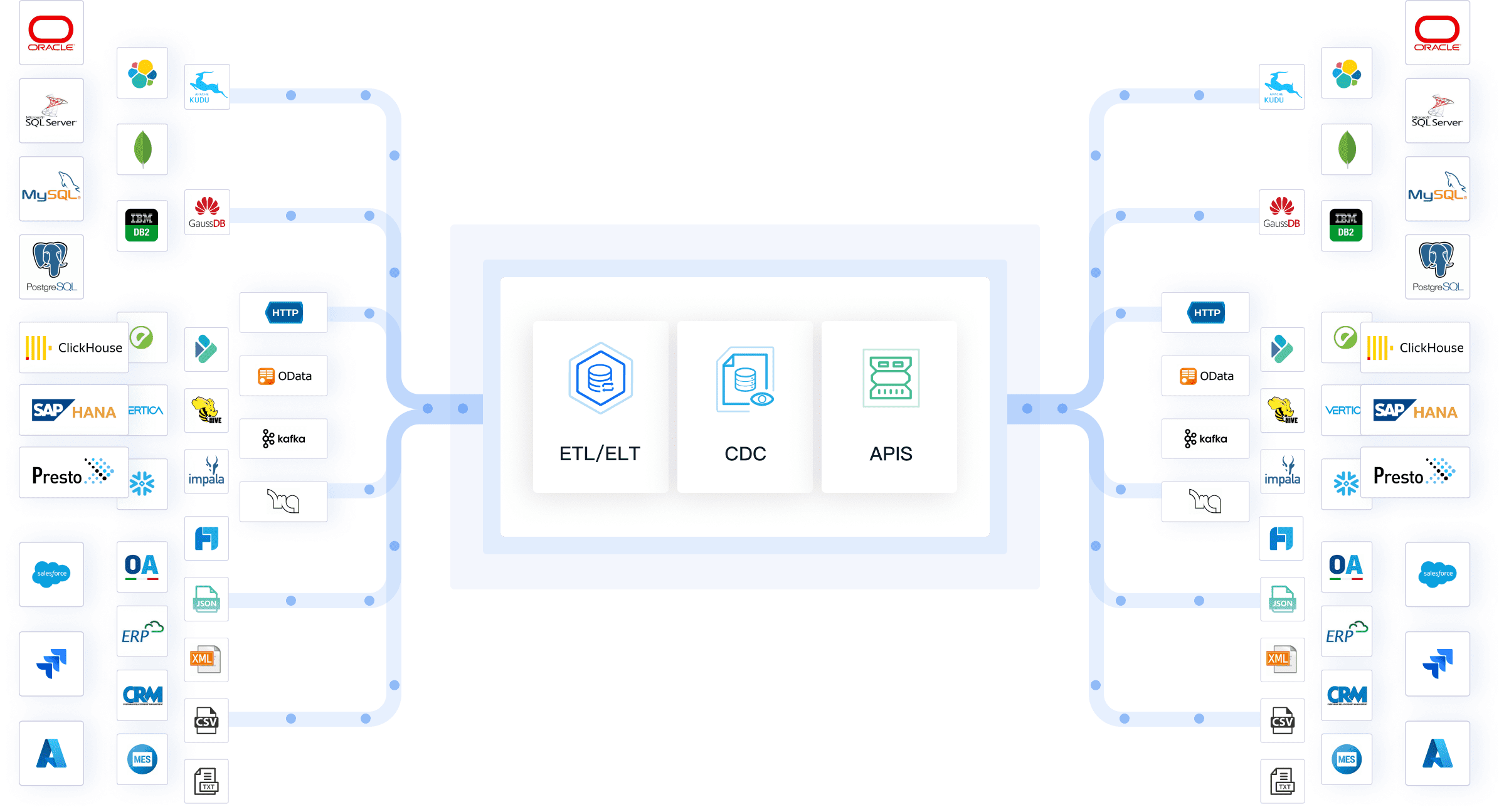
This capability increases efficiency by eliminating the need to rely on IT teams for report generation. You can create and update dashboards on your own, saving time and reducing bottlenecks. By working directly with the data, you minimize errors and produce more accurate results.
These features also improve data accessibility across your organization. Everyone works from the same source of truth, fostering collaboration and transparency. For instance, marketing teams can analyze campaign performance while finance teams review budget allocations—all without technical expertise. Self-service tools scale business intelligence platforms across departments, ensuring every employee can contribute to data-driven decision-making.
Multi-Format Distribution and Accessibility
Enterprise reporting software ensures your reports are accessible in multiple formats, enhancing usability and collaboration. You can distribute reports efficiently, notifying users via email or pushing specific pages to authorized individuals. This minimizes network traffic and ensures the right people receive the right information.
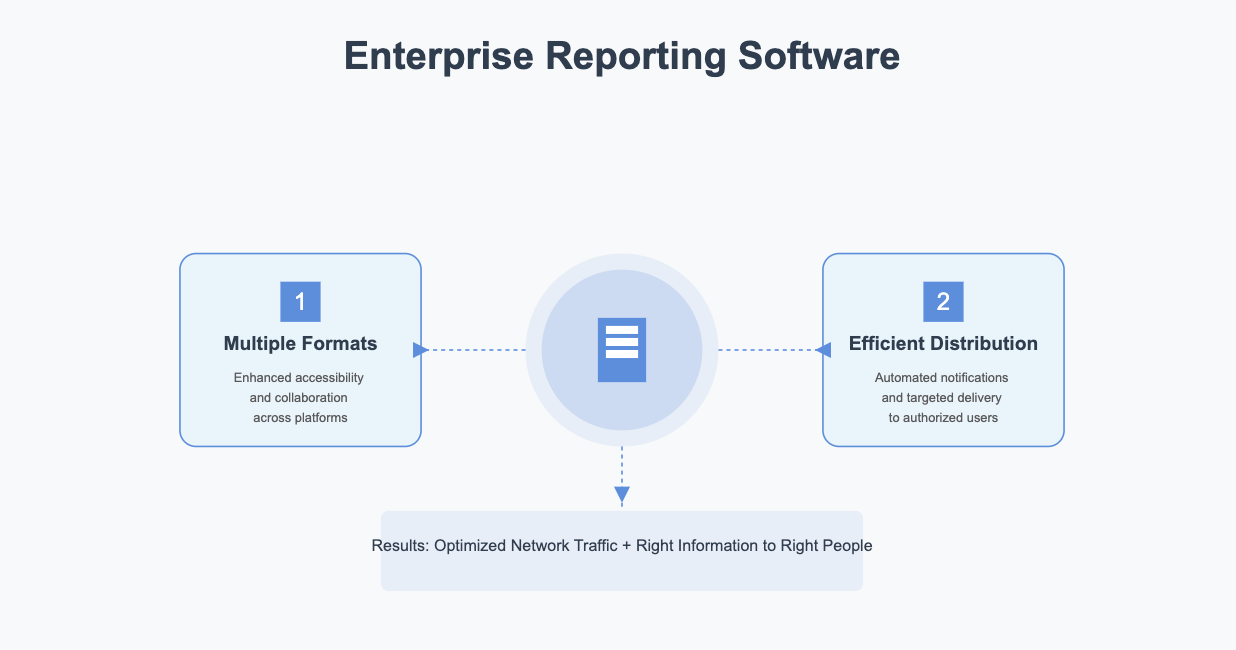
Self-service access allows users to retrieve, view, and print documents 24/7 without needing assistance. This improves customer relationships by providing timely information and reducing delays. For example, a sales team can access updated inventory reports instantly, enabling faster responses to client inquiries. These capabilities make enterprise reporting software an essential tool for modern business intelligence platforms, driving better outcomes and a quicker return on investment.
| Benefit | Description |
|---|---|
| Self-Service Access | Retrieve, view, and print documents anytime without customer service help. |
| Efficient Distribution | Notify users via email and push specific pages to reduce network traffic. |
| Enhanced Customer Relationships | Improve customer satisfaction and increase sales for faster ROI. |
Integration with Enterprise Business Intelligence Tools
Integrating enterprise reporting software with business intelligence tools enhances your ability to analyze and act on data. For example, FineReport’s seamless integration with SAP and Oracle ERP systems allows enterprises to unify financial and operational data, reducing reconciliation errors by 35% (Deloitte, 2025). Its drag-and-drop interface also simplifies KPI tracking for non-technical teams.This integration creates a seamless flow of information, enabling you to access advanced analytics and uncover deeper insights. By combining these tools, you can transform raw data into actionable strategies that drive success.
Modern reporting software incorporates technologies like artificial intelligence (AI), machine learning (ML), and natural language processing (NLP). These technologies expand the functionality of your reporting system. For example, AI and ML algorithms enable predictive analytics, helping you forecast trends and identify potential risks. NLP simplifies data interaction by allowing you to generate reports or query data using everyday language. These capabilities make it easier to detect anomalies, automate report generation, and uncover hidden patterns in your data.
Augmented analytics takes this integration a step further. It combines AI, ML, and NLP to automate data preparation, insight generation, and visualization. This approach empowers you to make faster decisions and equips your team with tools to become citizen data scientists. For instance, you can use predictive modeling to anticipate customer behavior or optimize inventory levels. These insights allow you to respond proactively to challenges and opportunities.

Integrating reporting software with business intelligence tools also improves collaboration across your organization. A unified platform ensures everyone works with the same data, fostering transparency and alignment. Teams can share insights effortlessly, enabling better communication and more cohesive strategies. This integration not only enhances your decision-making but also strengthens your competitive edge.
Tip: Choose reporting software that supports seamless integration with your existing business intelligence tools. This ensures you maximize the value of your data and stay ahead in a data-driven world.
Trends and Future Developments in Enterprise Reporting for 2025
The Role of AI and Machine Learning
Artificial intelligence (AI) and machine learning (ML) are transforming enterprise reporting by automating processes and enhancing data analysis. These technologies streamline reporting, ensuring you receive timely and accurate insights. AI-powered tools simplify complex data through visualizations like charts and dashboards, making it easier for you to understand trends and patterns.
FineVis leverages AI to auto-generate predictive models for inventory optimization. A logistics client using FineVis reduced stockouts by 18% through ML-driven demand forecasting, as highlighted in a 2025 case study by Aberdeen Group. Business intelligence platforms now integrate AI to gather data from multiple sources, helping you monitor key performance indicators effectively.
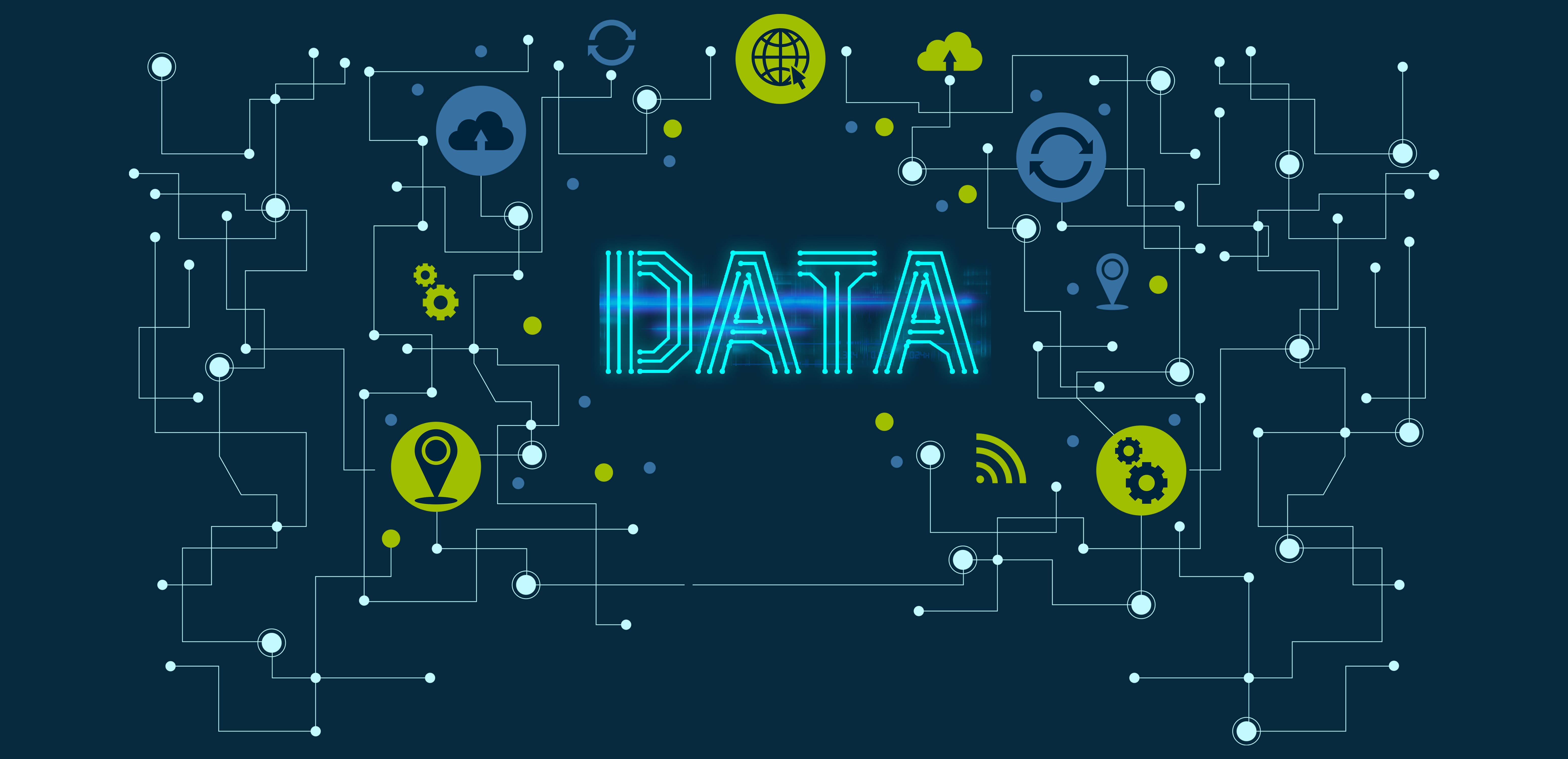
Generative business intelligence systems take this a step further. They use AI to uncover hidden opportunities and optimize processes. For example, AI-driven ETL (Extract, Transform, Load) processes improve data accuracy and consistency, ensuring high-quality analysis. Automated reporting tools also save time by delivering reports without manual intervention. By leveraging AI and ML, you can focus on strategic decisions rather than routine tasks.
Real-Time Data Analysis and Automation
Real-time data analysis is becoming a cornerstone of enterprise reporting. It allows you to act on information as it’s generated, giving you a competitive edge. Stream processing technologies enable businesses to respond quickly to market trends and customer behaviors. For instance, tools like Functionize provide immediate access to real-time data, ensuring your reports are always current. This capability enhances decision-making by keeping insights accurate and up-to-date.
Real-time data integration also plays a critical role. It consolidates information from various sources, ensuring your reports reflect the latest developments. This approach helps you identify opportunities and address challenges without delay. By adopting real-time analytics, you can make faster, more informed decisions that drive success.
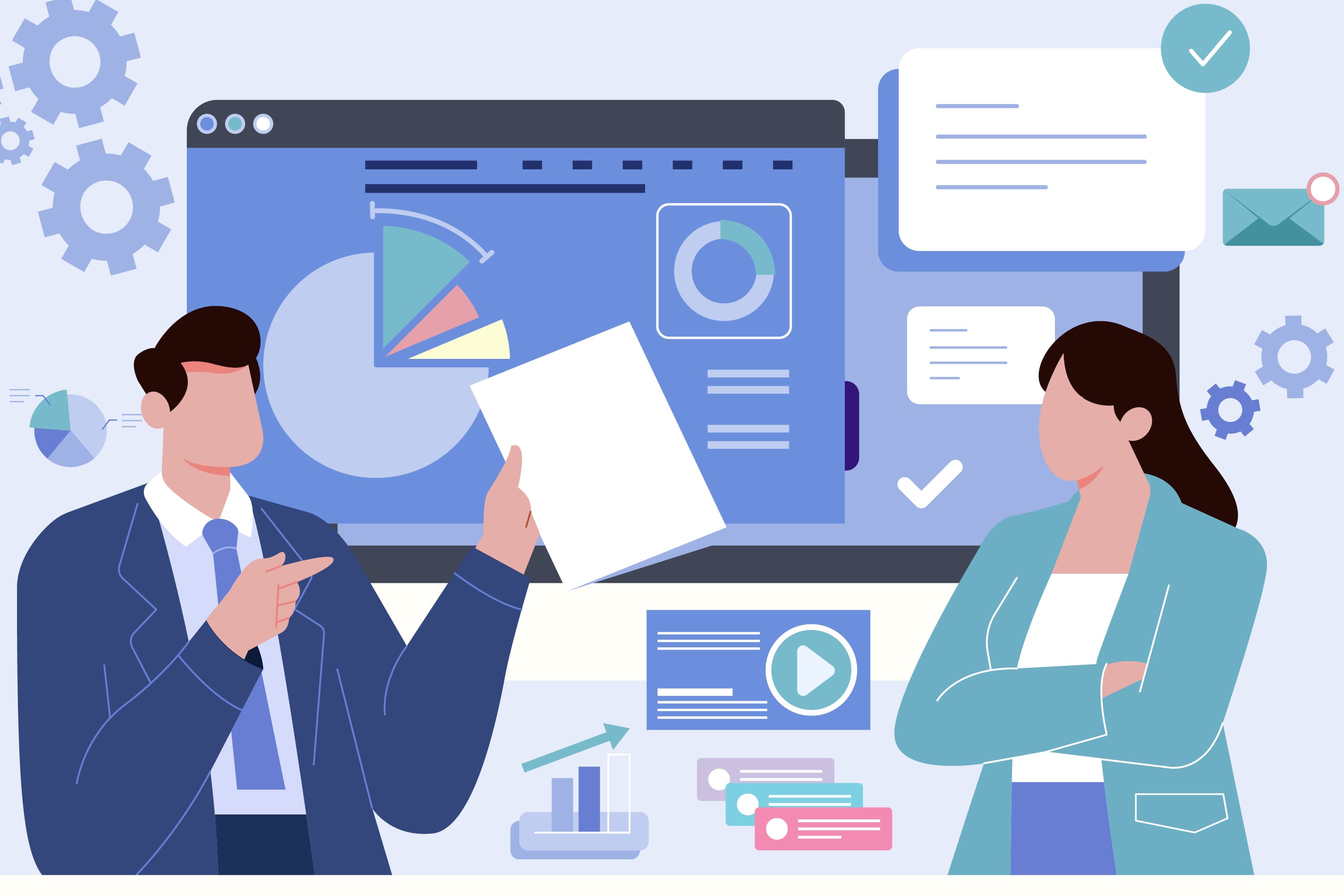
Data Security and Compliance in Reporting
Data security and compliance are essential in enterprise reporting. Businesses are adopting several measures to protect sensitive information and meet regulatory requirements. These include:
| Measure | Description |
|---|---|
| Security-focused mindset | Developing a culture that prioritizes data security across the organization. |
| Limiting access to sensitive data | Implementing robust access controls based on user roles and permissions to prevent unauthorized access. |
| Vetting vendors for compliance | Ensuring all vendors, not just core software providers, meet cybersecurity standards. |
| Compliance automation tools | Utilizing AI-driven software to automate compliance activities and keep data protection measures up to date. |
By fostering a security-first culture, you can safeguard your data and maintain trust with stakeholders. Automated compliance tools further simplify the process, ensuring your reporting practices remain aligned with evolving regulations.
Customization and Scalability for Evolving Needs
Enterprise reporting software must adapt to your business's unique requirements and growth. Customization and scalability ensure the tools you use today remain relevant as your needs evolve. These capabilities allow you to tailor reports, dashboards, and workflows to match your specific goals.
Why Customization Matters
Customization helps you create reports that align with your business objectives. A healthcare provider using FineBI’s customizable dashboards reduced report customization time by 70%, enabling rapid adaptation to regulatory changes. Gartner notes that "scalable BI tools cut IT costs by 20% annually." You can adjust templates, metrics, and visualizations to focus on what matters most. For example, a sales team might need detailed revenue breakdowns, while a marketing team may prioritize campaign performance. Customizable tools let you design reports that cater to each department's needs.
Tip: Use drag-and-drop interfaces to build reports quickly without technical expertise. This saves time and ensures your insights are actionable.
The Role of Scalability in Growing Businesses
Scalability ensures your reporting system grows with your business. As your data volume increases, scalable software handles larger datasets without slowing down. It also supports additional users, new data sources, and advanced features as your organization expands.
| Benefit | Description |
|---|---|
| Handles Growing Data | Processes large datasets efficiently as your business scales. |
| Supports More Users | Accommodates new team members without performance issues. |
| Adapts to New Requirements | Integrates with emerging technologies and evolving business needs. |
How to Choose the Right Solution
When selecting enterprise reporting software, prioritize tools that offer both customization and scalability. Look for features like modular architecture, cloud-based deployment, and integration capabilities. These ensure your system remains flexible and future-proof.
Note: Investing in scalable and customizable software reduces the need for costly upgrades later. It also ensures your reporting tools stay aligned with your business goals.
Customization and scalability empower you to adapt to change. They help you stay competitive and ensure your reporting system supports your long-term success.
Enterprise reporting remains essential for driving business success in 2025. It fosters collaboration by breaking down silos and creating a shared platform for data access. Modern reporting tools promote a data-driven culture, aligning teams toward common goals. To stay competitive, you should adopt solutions that integrate AI, machine learning, and NLP for advanced analytics and predictive modeling.
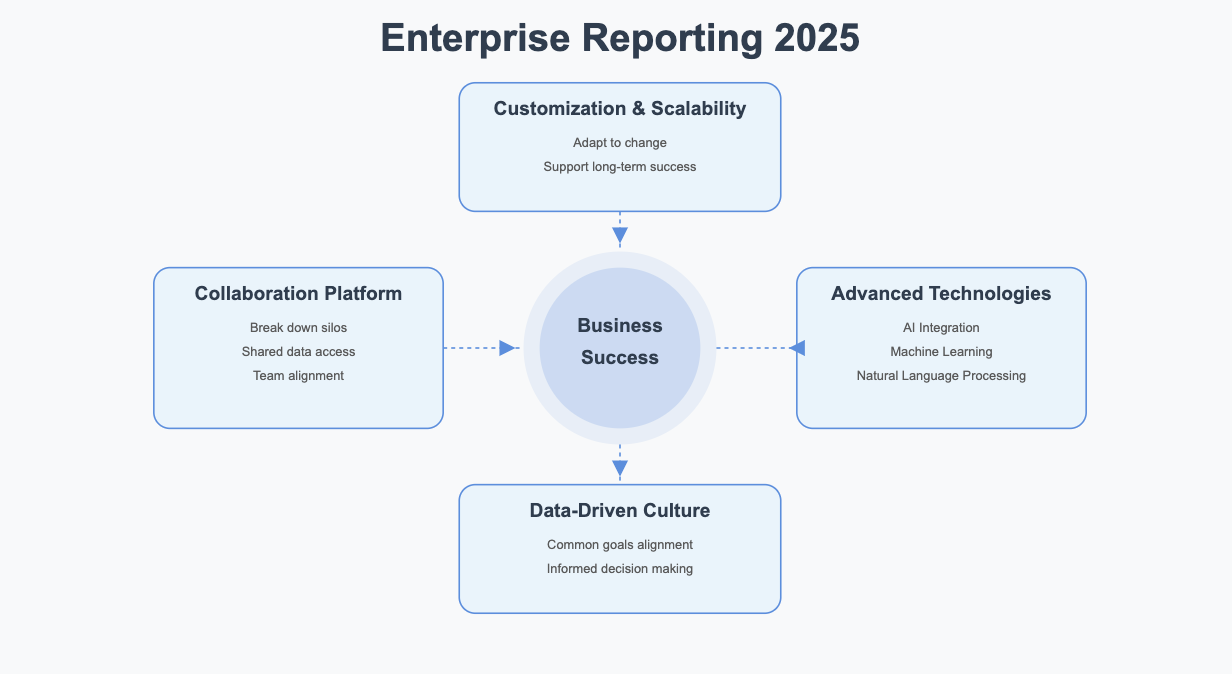
Actionable Steps to Optimize Reporting Solutions:
- Assess your organization’s size and data needs.
- Evaluate tools for scalability, ease of use, and integration.
- Standardize reporting processes for consistency.
- Automate repetitive tasks to save time and reduce errors.
- Provide training to enhance employee skills.
By following these steps, you can unlock the full potential of enterprise reporting.
FAQ
What is the difference between enterprise reporting and business intelligence?
Enterprise reporting focuses on collecting and presenting data through reports and dashboards. Business intelligence goes further by analyzing that data to uncover trends, patterns, and actionable insights. Reporting provides the "what," while business intelligence explains the "why" and "how."
How can small businesses benefit from enterprise reporting?
Enterprise reporting helps small businesses track performance, identify growth opportunities, and improve decision-making. It simplifies data analysis, enabling you to compete with larger companies. With customizable tools, you can focus on metrics that matter most to your business goals.
Is enterprise reporting software difficult to use?
Modern enterprise reporting software includes user-friendly features like drag-and-drop interfaces and self-service tools. These make it accessible even for non-technical users. You can create reports, explore data, and gain insights without needing advanced technical skills.
How does real-time reporting improve decision-making?
Real-time reporting provides up-to-date insights, allowing you to respond quickly to changes. It helps you monitor key metrics, identify issues, and seize opportunities as they arise. This agility ensures your decisions are based on the latest information, not outdated data.
What should you look for in enterprise reporting software?
Look for features like customization, scalability, and integration with business intelligence tools. Prioritize software with real-time reporting, self-service capabilities, and strong security measures. These ensure the solution meets your current needs and adapts as your business grows.
Click the banner below to experience FineReport for free and empower your enterprise to convert data into productivity!
Continue Reading About Reporting Tools
Top 15 AWS Reporting Tools for Effective Cost Management
Top 10 Ecommerce Reporting Tools for 2025

The Author
Lewis
Senior Data Analyst at FanRuan
Related Articles

What is integrated reporting and why is it important
Integrated reporting combines financial and non-financial data, offering a full view of value creation, transparency, and stakeholder trust.
Lewis
Dec 12, 2025

What Is a Weekly Sales Report and Why Does It Matter
A weekly sales report tracks sales data, highlights trends, and guides decisions. See key components and benefits of weekly sales reports for your team.
Lewis
Dec 11, 2025
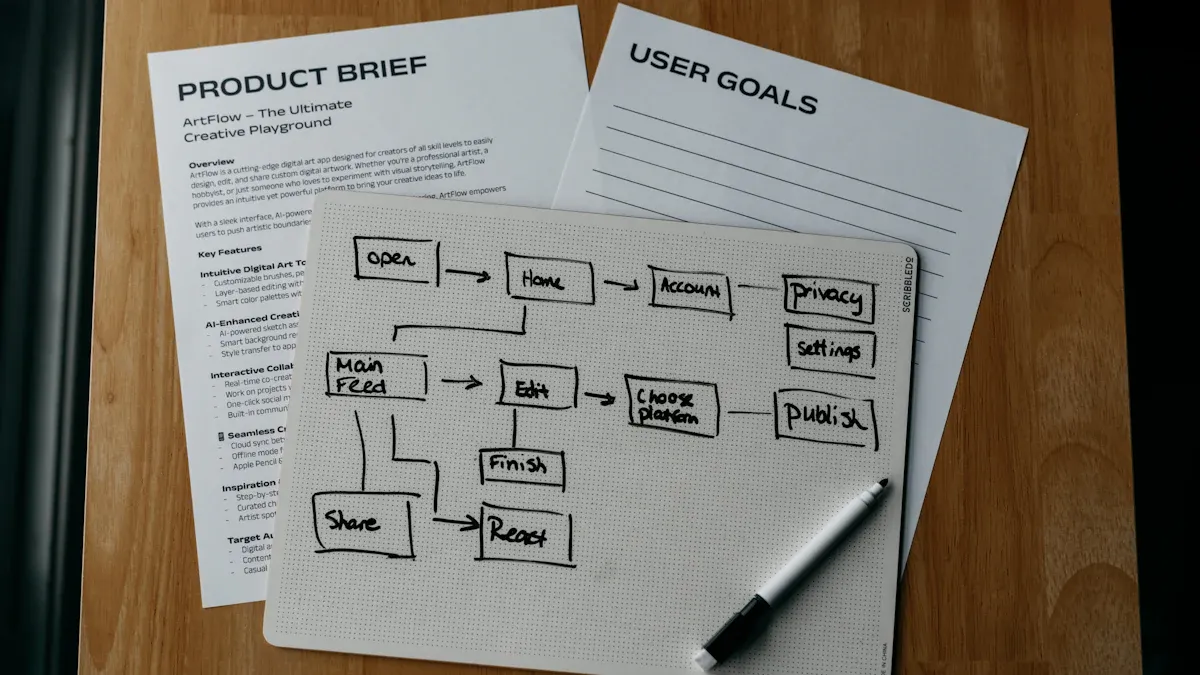
Top 9 Best Reporting Tools for ASP.NET Developers
Compare the top 9 best reporting tool for asp net projects in 2026. Find features, integration, and export options for ASP.NET and ASP.NET Core apps.
Lewis
Dec 10, 2025
